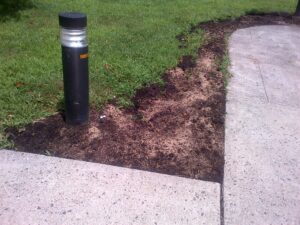Main Content
Recently, surface soil temperatures have been dropping below 70° F at night. While this is a good temperature range for growth of cool season grasses, it is a signal that much cooler soils are not far away. Grow of new seedings, overseedings, and turfs needing recovery will slow dramatically once soil temperatures break below the 60° F threshold. We have reached the time (October 1) where we no longer recommend seeding of most grasses except perennial ryegrass. Perennial ryegrass can be seeded as late as October 15 and still have high probability of develop a stand of turf.
If you need more growth out of your turf, this means there is little the time for action. Waiting another two weeks could be too late for any substantial growth through the rest of this year. In New Brunswick, the rain total for September has been very modest (1.23 inches) and there may be a need to irrigate to get recovery or better establishment of seedings before it is too cool.
Fertilization is another factor to evaluate. A turf that is healthy and vigorous probably doesn’t need fertilization but a thinning stand of grass with a sickly yellow-green color is likely to need some nitrogen fertilization. You need to soil test to figure out whether other nutrients such as phosphate and potash are needed.
Now is a good time to fertilize if the turf conditions warrant it. An application of 0.5 to 0.9 lb. of nitrogen per 1,000 sq. ft. is probably all that is needed for many turfs at this time of year. If the turf continues to struggle nutritionally (sickly yellow-green color), another application of 0.5 to 0.9 lb. of nitrogen per 1,000 sq. ft toward the end of October would be useful. At high rates (above 0.7 lb. of N), use a fertilizer product that contains slowly available nitrogen. Note that state law requires lawn fertilizers sold at retail (to homeowners) to contain slow release nitrogen. Also recall that state law prohibits nitrogen and phosphate fertilization by homeowners after November 15. Professional are prohibited from N and P fertilization after December 1.
